Home Tags Posts tagged with "stimulus"
stimulus
US stock market closed at record level, helped by Japan’s surprise move to step up its stimulus measures.
The Dow Jones Industrial Average rose 1% to close at a record 17,390.52. The S&P 500 also closed at an all-time high to reach 2,018.05, up 1%.
European and Asian markets had recorded strong gains earlier.
The Bank of Japan surprised markets when it announced that it would increase its asset buying plan to 80 trillion yen ($726 billion) a year.
That was up from the previous rate of 60-70 trillion yen.
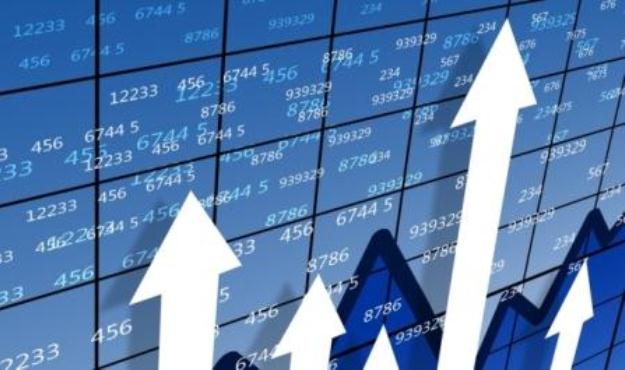
US stock market closed at record level, helped by Japan’s surprise move to step up its stimulus measures
“The Japanese central bank has taken the QE baton from the Fed and equity traders couldn’t be happier,” said David Madden, market analyst at IG.
Among individual shares, travel firm Expedia jumped more than 5% after it reported strong results for the third quarter.
Groupon soared 22% after the discount coupon firm reported third-quarter profits and revenue that beat expectations.
Starbucks shares fell 2.3% after the coffee chain’s sales in the Americas region fell short of forecasts.
Starbucks reported a 5% rise in underlying sales at its stores in the region, but analysts had expected growth of more than 6%.
On the currency markets, the dollar rose to a near seven-year high against the yen, rising above 112 yen to the dollar.
The stronger dollar helped to push the price of oil lower. US crude dipped below $80 a barrel, but recovered to end 46 cents lower at $80.66 a barrel.
Brent crude for December delivery fell 38 cents to $85.86 a barrel.
[youtube 6JLbcWg_Rms 650]
The Fed is ending its quantitative easing (QE) stimulus program begun in 2008.
The central bank said it was confident the US economic recovery would continue, despite a global economic slowdown.
The targets for inflation and reduction in unemployment were on track, the Fed said in a statement.
The Fed, which also said it would not raise interest rates for a “considerable time”, has gradually cut back QE since last year.
The statement suggested that although the jobs market is strengthening, it is still not back to normal, which is why interest rates are being held.
“The Committee continues to see sufficient underlying strength in the broader economy to support ongoing progress toward maximum employment in a context of price stability,” the Fed said.
Analysts said the news was in line with expectations.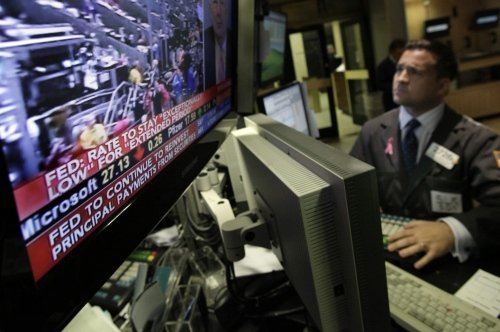
Several others seized on the Fed’s comments about slack in the labor market. Previous policy statements have referred to “significant underutilization of labor resources”.
Wednesday’s statement left out the word “significant”.
US shares were down ahead of the statement and continued to drift lower after the news was announced.
QE started in November 2008 amid the financial crisis and fears that the US, and the rest of the world, might be facing another great depression.
The Fed’s traditional ammunition, cutting interest rates, was running low – there was one more cut the following month, taking the main interest rate target down to practically zero.
The central bank began buying financial assets and creating new money to pay for them.
In total, the Fed has added $3.7 trillion worth of assets to its holdings, about an eightfold increase.
Recent data has pointed to increase spending by consumers and businesses. However, the housing market is still struggling and pay is stagnant.
There is concern about the long-term impact of the US’s persistent low inflation, which risks undermining consumer spending as people delay purchases in the hope that prices will fall further.
[youtube nb_kBAaLWUg 650]
The European Central Bank (ECB) has cut its benchmark interest rate by 10 basis points to 0.05%, and introduced new stimulus measures.
The ECB had earlier cut its rate from 0.25% to 0.15% in June, and also became the first major central bank to introduce negative interest rates.
It will also launch an asset purchase program, which will buy debt products from banks.
It is hoped this move will add liquidity to the financial system and revive lending.
The move falls short of a program of buying government bonds – a process known as quantitative easing (QE), and one which the US Federal Reserve has undertaken.
ECB chief Mario Draghi said that QE had been discussed by the bank.
“Some of our governing council members were in favour of doing more than I’ve just presented, and some were in favor of doing less,” he said.
“So our proposal strikes the mid-road…. a broad asset purchase program was discussed, and some governors made clear that they would like to do more.”
The ECB has been under pressure to kick-start the eurozone economy, as manufacturing output has slowed and inflation has fallen to just 0.3%.
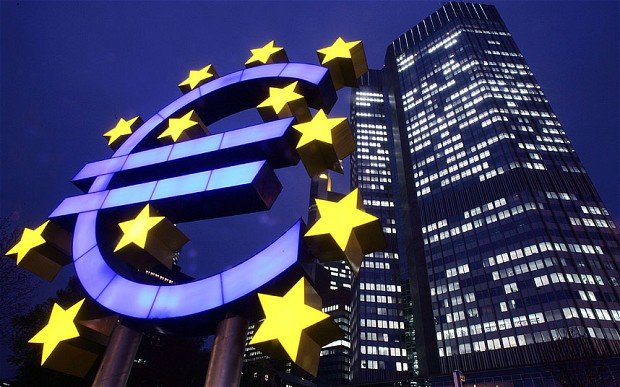
The ECB has cut its key interest rate to lowest ever level
Referring to one element of the new stimulus program, the purchase of asset-backed securities (ABS), Mario Draghi said: “The Eurosystem will purchase a broad portfolio of simple and transparent asset-backed securities with underlying assets consisting of claims against the euro area non-financial private sector under an ABS purchase program.
“This reflects the role of the ABS market in facilitating new credit flows to the economy and follows the intensification of preparatory work on this matter.”
Mario Draghi also gave an update on the ECB’s forecasts for the eurozone economy.
The new predictions warned of slower growth, of 0.9% in 2014, and of 1.6% in 2015.
Meanwhile the forecast for inflation was cut to 0.6% rising to 1.1% in 2015, and well short of the ECB’s target of close to, but below, 2.0%.
After the latest news was announced the euro fell to $1.2996, the lowest since July 2013 and the first time it has fallen below $1.30 since then.
As was the case after the ECB’s last rate cut in June, Mario Draghi again said that cuts had reached “the lower bound”.
The main benchmark refinancing rate determines what banks pay the ECB for credit, and affects what banks charge companies to borrow.
The central bank also cut its deposit rate, what banks pay to keep their money at the central bank, to minus 0.2% from minus 0.1%.
It is hoped that this measure will encourage banks to lend to business, rather than sit on their cash.
[youtube WnaJ1laIWfo 650]
Federal Reserve’s stimulus efforts will be cut in “the coming months”, the central bank’s officials confirmed.
They believe that the US recovery is strengthening, according to minutes from their October meeting.
The Fed is currently engaged in an $8 billion a month bond buying programme to lower interest rates and boost the US economy.
US markets fell on the news of a potential slowing of easy money.
In the meeting minutes, released on Wednesday, policy makers said they “generally expected that the data would prove consistent with the Committee’s outlook for ongoing improvement in labor market conditions and would thus warrant trimming the pace of purchases in coming months”.
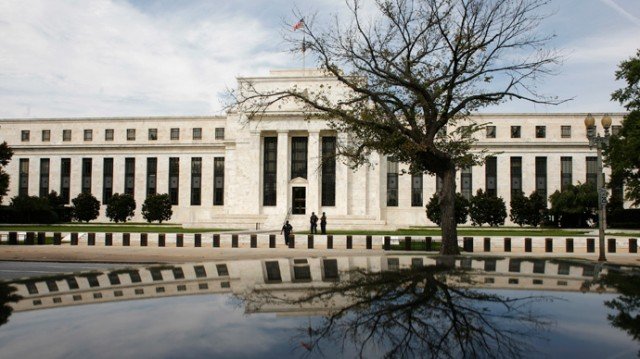
Federal Reserve’s stimulus efforts will be cut in the coming months
However, they also stressed that investors should be assured that short-term interest rates will remain low for an extended period of time – perhaps even after the unemployment rate drops below 6.5% benchmark.
Many meeting participants indicated a desire to better coordinate the Fed’s communication policy regarding the easing back of bond purchases, and of interest rates setting.
Mortgages rates spiked over the summer, after outgoing Chairman Ben Bernanke indicated the central bank was considering a slowing of its easy money policy.
They only declined after the Fed, in a surprise move, decided to maintain the programme – known as quantitative easing – after its September meeting.
The last Federal Open Market Committee meeting under Ben Bernanke’s leadership is scheduled to take place from December 17 – 18.
The minutes also note that Fed policymakers had an unscheduled conference call on October 16 – just before the US was set to breach the so-called debt ceiling and potentially default on its debt obligations.
According to the minutes, policymakers agreed that had Congress been unable to come to an agreement, the situation would have been “potentially catastrophic”.
The US economy grew at an annualized pace of 2.5% in Q2 2013, the Commerce Department said in revised figures.
That was more than double the pace recorded in the previous three months, and above estimates of 2.2%.
The rise, helped by an increase in exports, is a further sign that the economy may be getting back on track.
The government had originally estimated that GDP grew at a 1.7% rate in the second quarter.
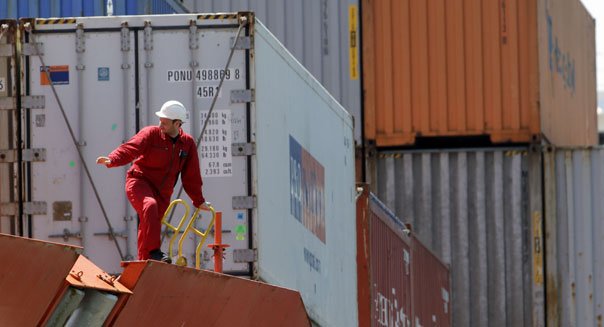
The US economy grew at an annualized pace of 2.5 percent in Q2 2013
The revised non-annualized quarter on quarter figure was 0.6%, up from an initial 0.4% estimate.
Housing and business investment, two key sectors of the economy, remained strong in the revised figures.
Housing construction grew at an annual rate of 12.9%, the fourth consecutive quarter of double-digit growth.
Meanwhile, business investment was revised up to a 16.1% rate.
The government also said data from retailers showed they had restocked their shelves at a faster pace in the April-to-June period than first thought.
The positive news could make US central bank economists more likely to begin reducing monthly bond purchases later this year.
The programme is one of the US’s last stimulus measures.
Economists think growth will stay at the 2.5% rate in the second half of the year, boosted by steady job gains and less drag from federal spending cuts.
[youtube mjd75N1OpYA]
The US Labor Department has announced that the country’s economy added 162,000 new jobs in July.
The figure – which measures the number of jobs outside the US farming sector – was below economists’ expectations of more than 180,000 and the government also cut its previous estimates for hiring in May and June.
Nonetheless, the new jobs helped the unemployment rate to fall to 7.4%.
That was down from 7.6% and is the lowest jobless rate in four years.
The news adds to the picture of a slowly growing US economy and may make its central bank more likely to end its monetary stimulus programme.
The Federal Reserve is currently buying $85 billion a month in bonds which helps to keep borrowing costs low.
However, there is much speculation as to when the Fed will start to rein in this stimulus programme.
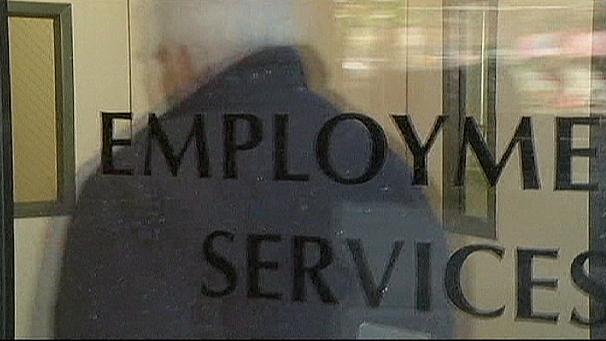
US economy added 162,000 new jobs in July
Its chairman, Ben Bernanke, has said that it might start cutting down the rate of bond buying by the end of the year and stop altogether by the middle of 2014, depending on the strength of the economy.
Earlier this week, figures showed that the US economy grew at a faster-than-expected annualized pace of 1.7% in the second quarter of the year.
That was up from the growth rate for the first three months of 2013, which was revised lower to 1.1% from 1.8%.
Gordon Charlop, of Rosenblatt Securities said the figures were moderately encouraging: “The idea that the unemployment dropped at all, went below 7.6%, is showing that the trend is going the right way.
“We’re sort of grinding along here. We’re not surging. I don’t think there’s anything here that will cause the Fed to do anything significant.”
Revisions to previous months’ data saw May’s jobs increase downgraded to 176,000, below the 195,000 previously estimated, while June’s increase was lowered to 188,000, from the 195,000 originally reported.
Paul Ashworth, chief economist at Capital Economics, said despite that, the employment picture was much brighter than last year: “While July itself was a bit disappointing, the Fed will be looking at the cumulative improvement.
“On that score, the unemployment rate has fallen from 8.1% last August, to 7.4% this July, which is a significant improvement.”
Other figures released on Friday confirmed the picture of moderate economic growth.
US consumer spending and inflation both rose in June, with the US Commerce Department saying spending was 0.5% higher and annual inflation running at 1.3% – although that is still well below the US target of 2%.
[youtube mGP-xzaHKyM]
Global markets have fallen sharply after the Federal Reserve signaled it may begin to scale back its stimulus of the US economy later this year.
European stock markets were down 3% or more by the close, as US markets fell a further 1.5% at their open.
Other risky investments, such as bonds and commodities also fell, with short-term cash offering the only safe haven.
The dollar rose as markets anticipated US interest rates rising sooner than had been thought, while the yen fell.
The markets were spooked after Fed chairman Ben Bernanke said that if the central bank’s forecasts were correct, it could begin slowing down its “quantitative easing” programme of asset purchases by the end of 2013, and wind them down completely by the middle of 2014.
The end of the asset purchase programme would mark a return to the use of interest rates as the monetary policy weapon of choice.
The Fed has been buying bonds at a rate of $85 billion a month, but believes it may be able to scale this back as the US economy recovers and end the programme next year.
The Fed has kept short-term interest rates in a range between zero and 0.25% since December 2008.
Although they are expected to remain close to zero for at least a couple more years, Ben Bernanke’s comments raised market expectations that the short-term cost of borrowing would rise sooner than had previously been thought.
Ben Bernanke emphasized that the programme was tied to how well the US economy, and in particular the US jobs market, was doing.
However, his comments led to a widespread equity sell-off in the US late on Wednesday, with US markets down 1%.
The rest of the world followed suit on Thursday, with the market slide gaining momentum, with US markets falling further after they reopened.
The latest market sell-off continues a steady decline in share prices worldwide over the last month.
It repeats similar market sell-offs at the same point in the interest rate cycle in 2003 and in 1993-94 when investors started to anticipate a return to interest rate rises.
The expectation of rising interest rates also infected bond markets, which normally provide a safe haven from falls in the stock market.

Global markets have fallen sharply after the Federal Reserve signaled it may begin to scale back its stimulus of the US economy
The 10-year US Treasury bond fell sharply in price on Wednesday, causing its yield – the yearly return earned by investors and the implied cost of borrowing of the US government – to rise from 2.19% to 2.35%. On Thursday morning, the rate crept higher to 2.38%.
Borrowing costs also rose in other countries – particularly for debtors deemed by markets to be riskier, including recession-hit southern European countries such as Spain and Italy.
Even the yield on super-safe German government bonds edged higher, in part due to the widely perceived unwillingness of the European Central Bank to cut eurozone interest rates.
Investors have also been rattled by events in China, where the country’s economy appears to be slowing sharply, and its banking system is experiencing severe stress as the Chinese central bank seeks to rein in what the authorities increasingly see as the excessive and opaque lending of recent years.
With the central bank unwilling to make cheap loans easily available, the interest rate at which Chinese banks were willing to lend to each other overnight jumped to an unprecedented annualised 30% on Thursday.
The double-digit, reminiscent of the 2008 Western financial crisis, may imply a collapse of confidence in the interbank market as well as an unwillingness of the central bank to accommodate the banks.
There are widespread fears that the state-owned banks may be facing heavy losses on the glut of loans they rushed out over the last five years in order to keep the Chinese economy afloat despite the stagnation of its main Western export markets.
Evidence that both the US and Chinese central banks were taking their foot off the economic accelerator also depressed global commodities market.
China is the dominant consumer of many of the world’s raw materials, particularly industrial metals, iron ore and other materials used in its construction boom.
The price of copper futures – a bellwether of Chinese demand – fell 2.4% and threatened to break through lows set in April.
The prospect of higher interest rates in US dollars also translated into a stronger US currency.
All major currencies fell against the dollar, as did the price of precious metals.
Gold resumed its rout of recent months, dropping another 6% on Thursday. It is now down 28% since the apparent bubble in the metal burst in October.
The price of silver – the more volatile of the two – fell 6.4%.
The metals have proved popular among investors who fear that the Fed’s money printing would eventually result in sharply rising prices – something that has as yet failed to materialize.
However, they failed to enjoy their traditional safe haven role in the current market turbulence – a role that has instead been usurped by US dollar cash.
[youtube UH-l_RFwpxs]
Global stock markets have fallen after some members of the Federal Reserve suggested its stimulus measures may be increasing the “risks of future economic and financial imbalances”.
The comments came in minutes of the Federal Reserve’s last meeting, where the Fed said it had left its monthly $85 billion bond-buying plan in place.
US markets opened lower on Thursday after recording their biggest drop so far this year on Wednesday.
European markets all closed down.
The Fed comments have raised expectations that the US central bank may scale back its bond-buying programme earlier than predicted.
Currently, the Fed is carrying out its plan of buying $85 billion of bonds a month until the US jobs market sees a substantial improvement.
By buying bonds, the Fed keeps interest rates low, which keeps the cost of borrowing for mortgages and other loans low.
However, the minutes of the Fed’s meeting in January showed that some members were concerned that the bond-buying programmes could push up inflation or could “foster market behavior that could undermine financial stability”.
The minutes said that “a number of participants” commented that an ongoing review of the effectiveness of the bond programme “might well lead the committee to taper or end its purchases before it judged that a substantial improvement in the outlook for the labor market had occurred”.
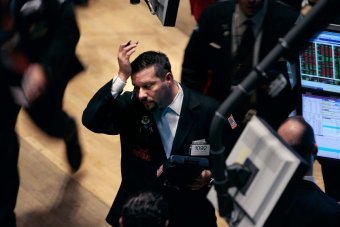
Global stock markets have fallen after some members of the Federal Reserve suggested its stimulus measures may be increasing the risks of future economic and financial imbalances
The bond-buying programme has been cited as a major reason for the rise in share prices in recent weeks, so signs of a premature end have hit stocks.
“US liquidity concerns following the Fed minutes looks like the pin which will burst the recent bubble in equities,” said Mike McCudden, head of derivatives at Interactive Investor.
On Wall Street, the Dow Jones index ended Wednesday down 108.13 points at 13,927.54, and continued to fall on Thursday, shedding a further 61 points by midday in New York.
In Asia, Japan’s Nikkei 225 fell 159.15 points, or 1.4%, to 11,309.13, while in Hong Kong the Hang Seng index closed down 400.74 points, or 1.7%, at 22,906.67.
European markets all fell, with London’s FTSE 100 closing down 1.6% at 6,291.54 and the Cac 40 in Paris falling 2.3% to 3,624.80.
The dollar rose 0.5% against the euro on Thursday, with one euro buying $1.3206.
While the dollar had been boosted by the Fed minutes, the euro was also hit by the latest survey of the eurozone region which suggested the downturn in the region’s businesses had worsened.
The latest eurozone purchasing managers’ index (PMI), compiled by research firm Markit, fell to 47.3 this month, down from 48.6 in January. A reading below 50 indicates contraction.
The figure was the lowest reading for two months and appeared to dash hopes that the eurozone’s economy would show signs of revival.
It also indicated a growing divergence between Germany and France, with output rising in Germany but declining at an increasing pace in France.
[youtube 6Y3KLt24uhQ]
Chinese economy, the world’s second largest, is showing signs of a rebound that could help it emerge from its worst economic period in 13 years.
According to the latest Chinese government figures, growth picked up to 7.9% in the final three months of 2012, from 7.4% in the previous quarter.
This was driven by state investment in infrastructure projects and efforts to get consumers and companies to spend.
Economic stability is seen as vital for China as its new leaders take over.
“It is obvious that the slowdown in the Chinese economy has halted for the moment,” said Fraser Howie, an economist and co-author of Red Capitalism.
“But one has to be mindful that any recovery will be limited in its scope, not least because of the various headwinds that China is facing,” he added.
“The new leaders, who take charge in March, will now have to find the right balance between trying to prevent the formation of a property bubble and keeping a healthy growth rate going.”
That may prove tricky, not least because China’s economic growth has slowed significantly from the highs of previous years, and analysts warn that state stimulus measures may wane.

Chinese economy, the world’s second largest, is showing signs of a rebound that could help it emerge from its worst economic period in 13 years
On Friday, the statistical office reported that gross domestic product, the main measure of growth, increased by 7.8% in 2012, down from 9.3% in 2011.
That was the slowest annual rate of growth since 1999.
But it is still way above the anemic growth rates experienced by most other major economies last year. Figures for the US, the world’s largest economy, and Japan, the third largest, are expected to show growth of about 2%.
The 17 members of the eurozone are collectively expected to contract by about 0.4%.
These factors brought down the pace of growth late last year to uncomfortable levels, with some economists predicting a “hard landing”, or a sharp slowdown.
However, their pessimistic predictions of a slump to growth of 6% seem to have been too extreme.
Instead the government implemented infrastructure spending programmes to spur growth and also provided incentives to encourage consumer spending and corporate borrowing.
“The government’s stimulus measures implemented last year have managed to stabilize growth and lay the foundations for solid expansion this year,” said Dariusz Kowalczyk of Credit Agricole CIB.
The figures released on Friday were “the best we could have wished for”, he added.
Underlining this optimism were other figures also released on Friday which showed an improvement in house prices and retail sales.
Asian stock markets ticked higher on the news, while the Australian dollar gained. Australia is a key exporter to China, selling minerals that are used to help power its economic expansion.
Hong Kong’s Hang Seng stock index was trading 0.7% higher, South Korea’s Kospi added 0.5% and Australia’s main stock index gained 0.3%.
Japan’s Nikkei 225 was the biggest gainer, adding 2.1% and getting an extra lift as a drop in the value of the yen helped exporters.
[youtube M_I7DZrJ_bo]









